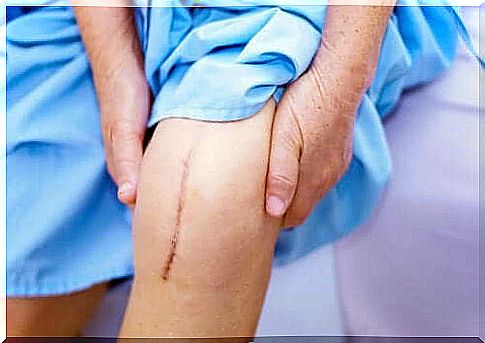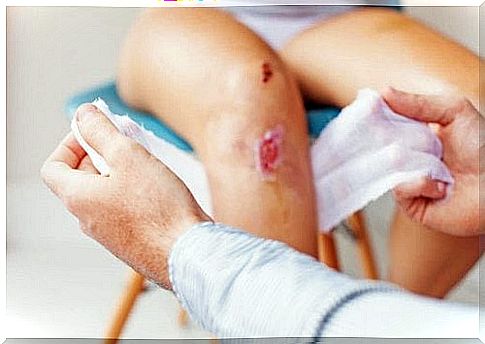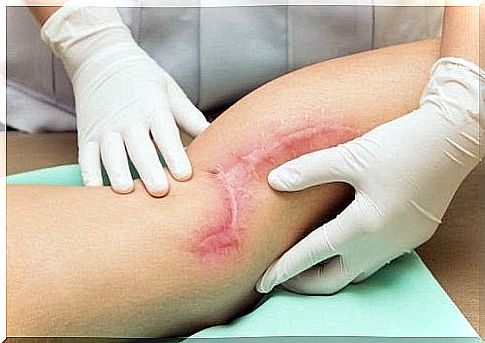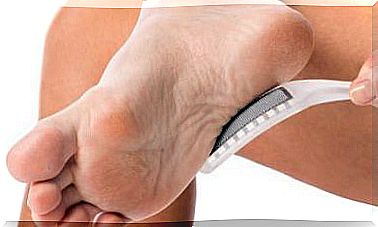Types Of Healing

There are different types of skin healing, because not all wounds are the same. Different mechanisms for producing injuries lead to more or less deep wounds.
The skin is made up of three layers, so it is necessary to know which one is affected: epidermis, dermis and hypodermis or subcutaneous layer. The epidermis is the most superficial layer and in contact with the outside, while the hypodermis is the deepest, in contact with the inside of the organism.
The middle layer of the skin is the dermis, and it is capable of causing pathological scarring when it is affected by a wound deep enough to penetrate it. The dermis is a highly specialized tissue and therefore the body has difficulty achieving its full repair.
We’ll first look at how the skin reacts to a wound to produce healing, and then we’ll see what types of scarring are possible.
Stages of healing
When the skin suffers a wound, it triggers a series of successive phenomena to repair it. How these phases are carried out determines the types of healing. There are five phases:
1. Coagulation and vascular response
As soon as the injury occurs, blood washes out the wound. Foreign bodies are dragged out of place to prevent infection. Soon after, the vessels are closed to clot and stop bleeding, with the help of platelets.
2. Inflammation
The second phase is inflammatory. Although the skin turns red, this is not related to the onset of an infection. The redness of inflammation is caused by intense cell movement and increased blood flow. A clear inflammatory fluid may even form in the wound, which is also not a sign of infection.
3. Granulation
Now the essence of the repair begins. The cells most involved are fibroblasts, which travel to the injury site to produce collagen. Collagen is the main component of the dermis, therefore, it is what replaces lost tissue.
4. Epithelialization
The ultimate function of wound repair is to restore the layer that separates the outside from the inside. The skin has its barrier function thanks to the epidermis. Epithelialization then consists of re-forming the epidermis that disappeared through cells called keratinocytes.
5. Remodeling
Once the wound is closed, the body must define what the scar will look like. If the wound affected only the epidermis, possibly there will only be cell regeneration and the tendency is for the scar to be normal. On the other hand, if the wound is deep, there is a greater chance that the scar will become pathological.

Types of healing
The stages of skin healing are always the same in all wounds, but not all are the same. That’s why three types of scars have been identified in the world of dermatology and surgery:
first intention
This is the name given to the process that occurs when the wound is small, not deep and there is a proximity between the wound edges. It is very rare that it leaves a long-term scar.
second intention
This is the healing process of a deeper wound that has affected the dermis. The result is usually a larger-than-normal scar and a more prominent appearance. The main cause is loss of substance or too great a distance between the wound edges. When this happens, the dermis must form many new tissues in the granulation stage, and this is the reason for the final deformity.
third intention
This type of scar is associated with medical intervention. This happens when a second suture is surgically placed on an existing one, or when dermal grafts are added for repair. It is a final scar guided by health intervention.
Types of scars

Although there are normal and expected scars, there are also those considered pathological scars. Let’s see how they are classified by medicine:
- Normal : This is what happens after a normal process. The end result is a fine line.
- Atrophic : is the loss of substance in the skin, when there is a small depression in the area where the wound was. It is a very common presentation of acne, for example.
- Hypertrophic : scars caused by types of scarring with excessive collagen production. The resulting skin is thick and protrudes above the level of the normal epidermis. It usually happens on areas of the skin with constant movement, such as the knee.
- Keloid : is an excessively large hypertrophic scar. It can itch and even cause burning. It usually extends beyond the initial limits of the wound that gave rise to it.
- Contracture : is the name given to burn scars. Scar tissue contracts, deforming the affected area.
Each of these types of scars, resulting in different forms of scarring, has a medical approach. You can see a surgeon or dermatologist if you have a scar that worries you. The professional will know how to guide you about the best approach for your case.









